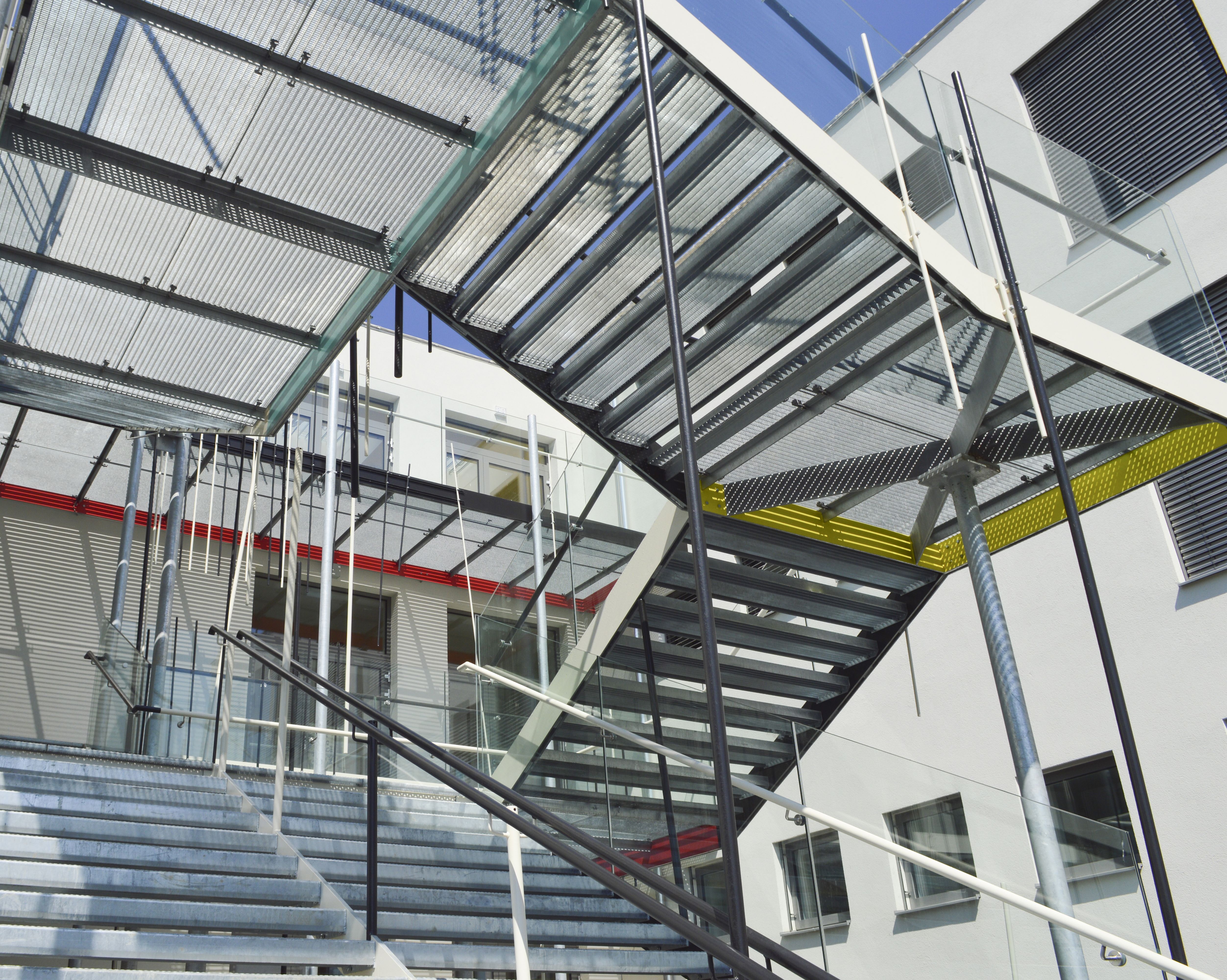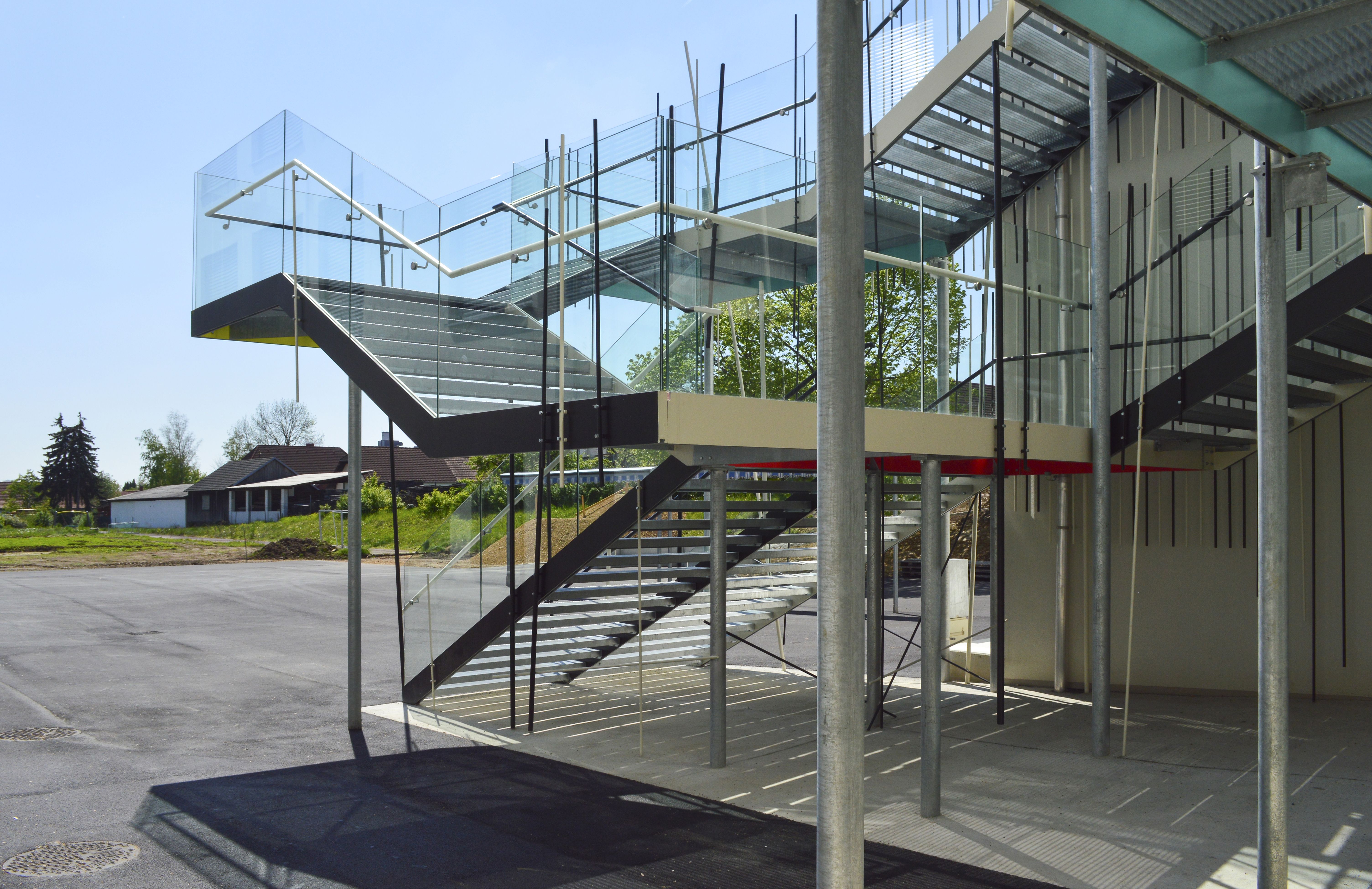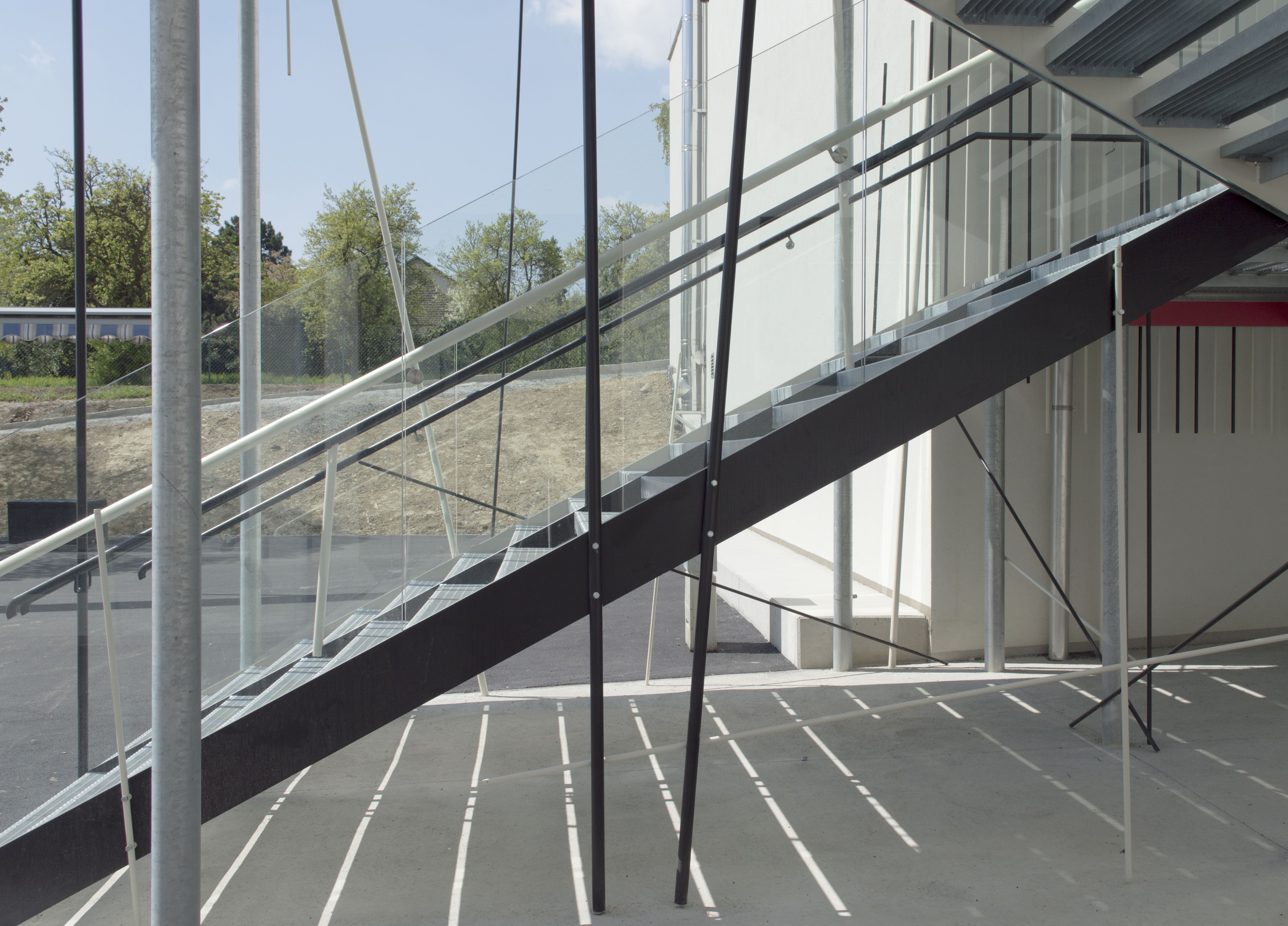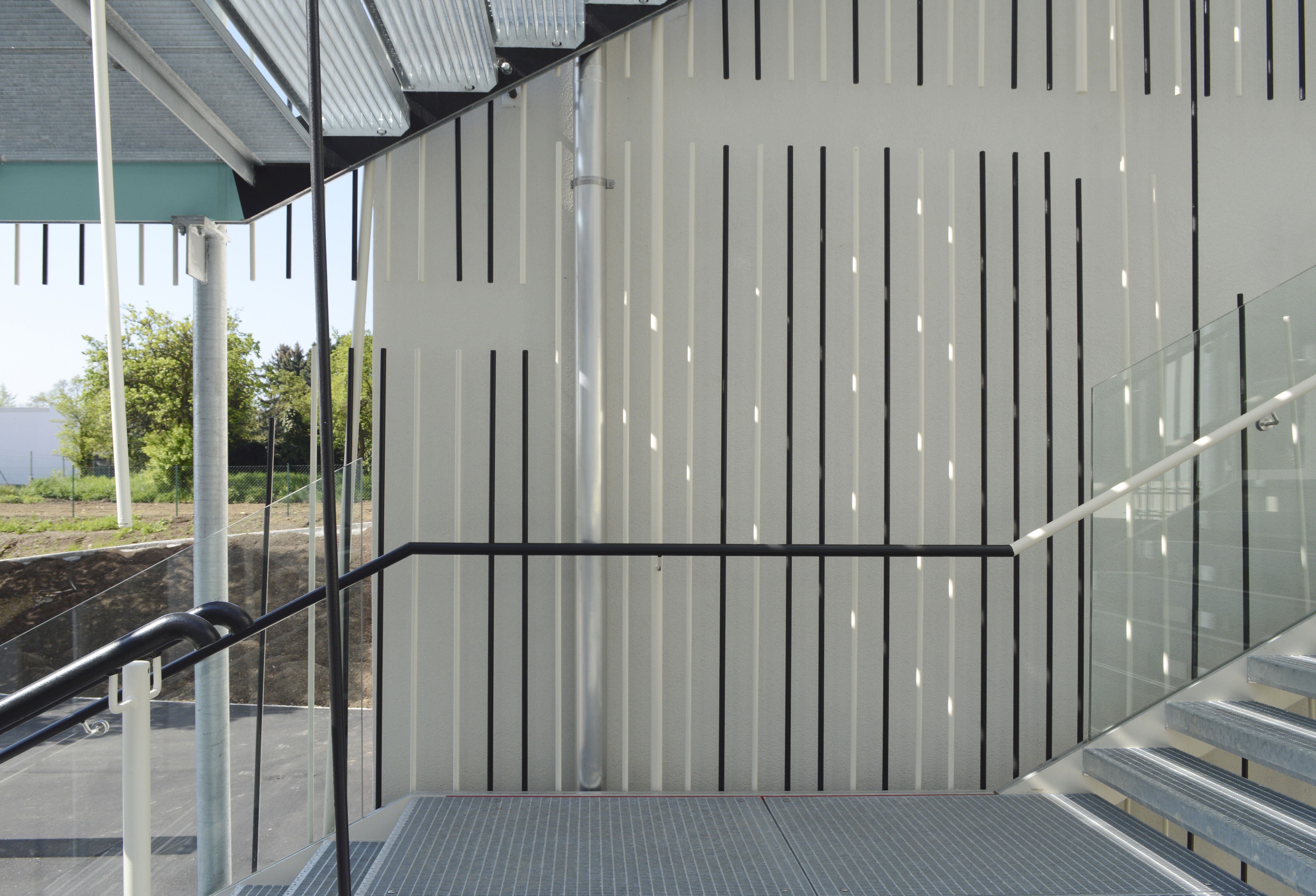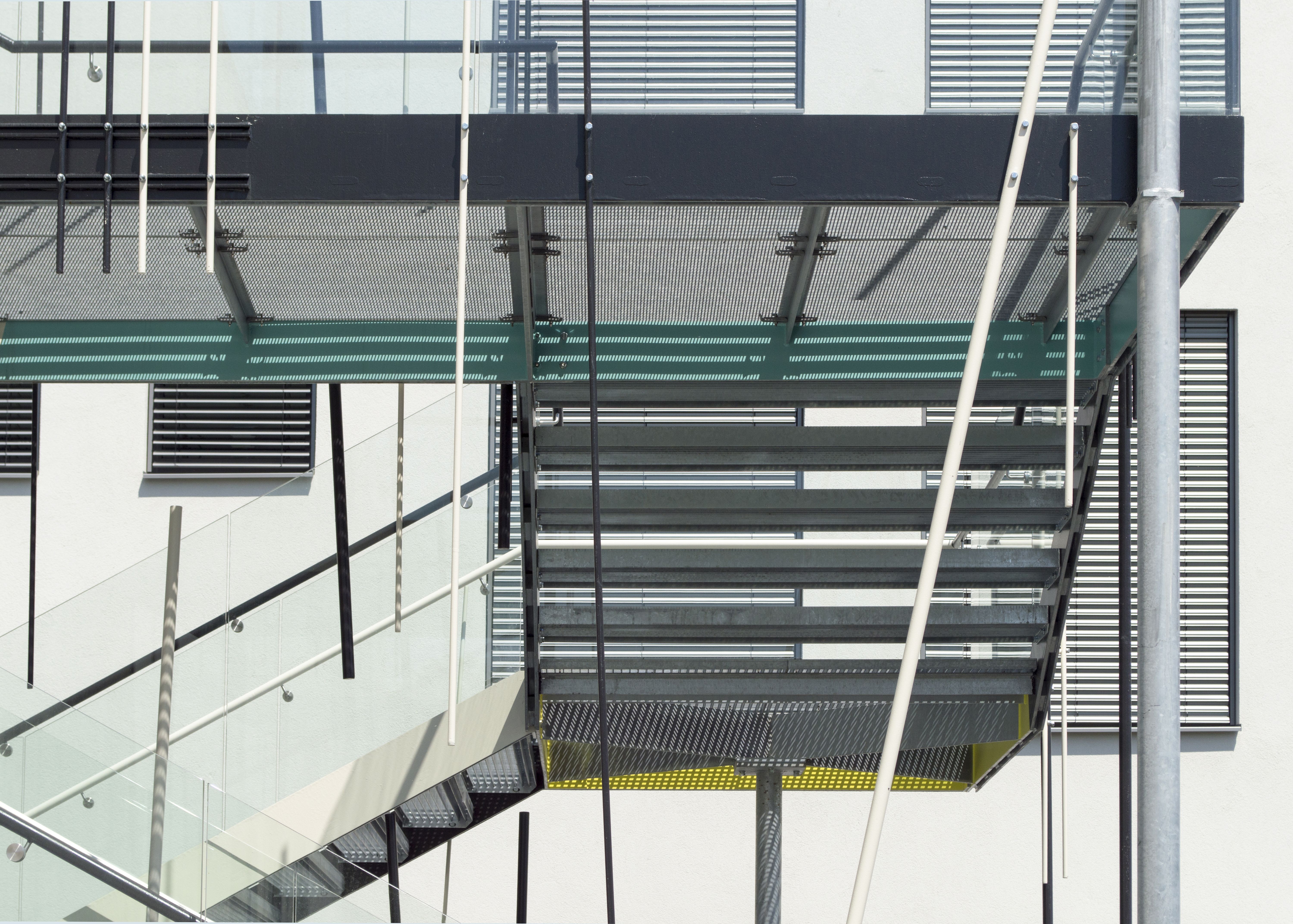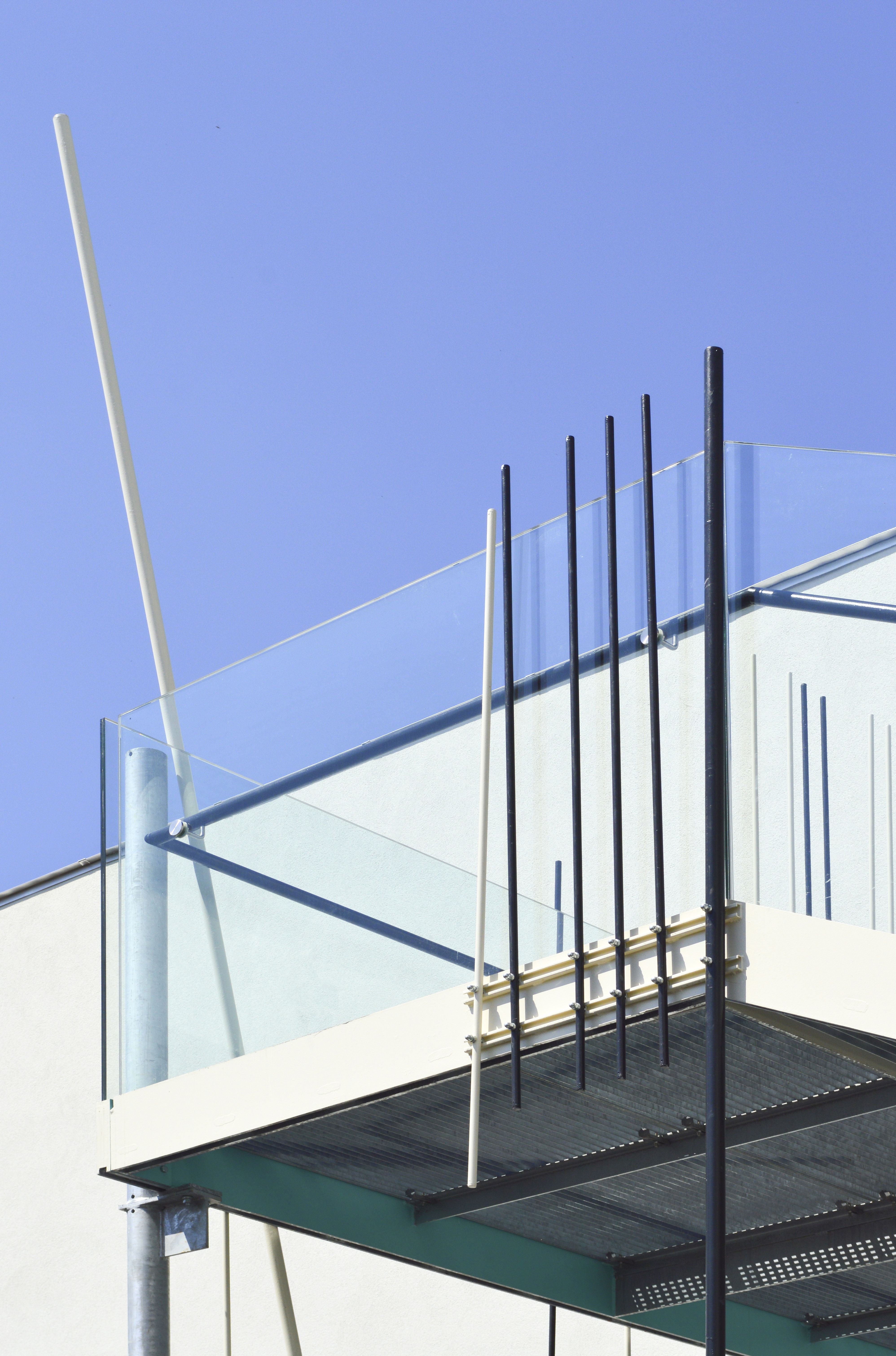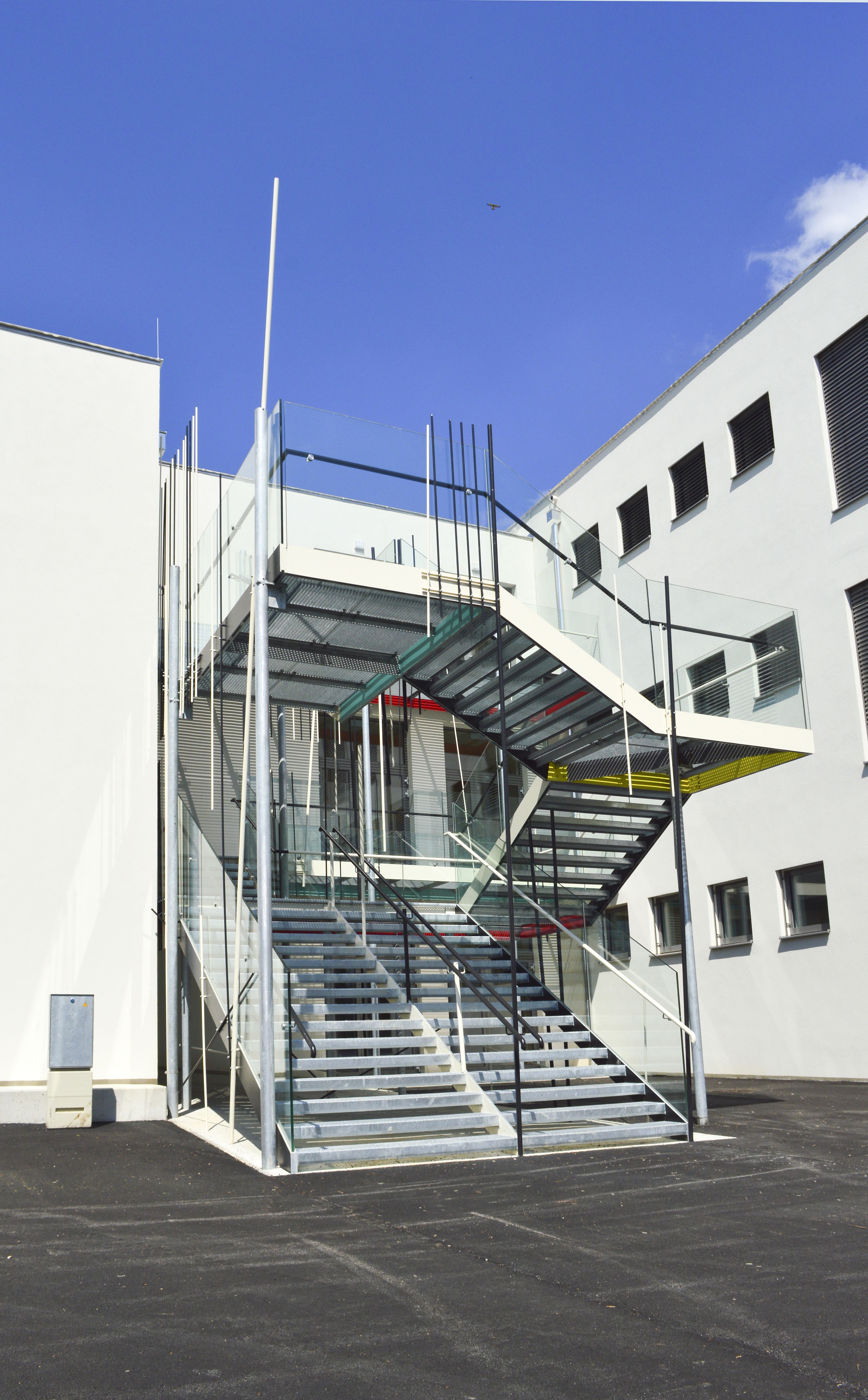Ines Hochgerner
:
Ziersdorfer Treppe
Back
Information
The design for the fire escape at the Ziersdorf Elementary School is the first public art project by the artist Ines Hochgerner. This is even more remarkable because the project was complex and posed many artistic challenges – like the building’s statics, school standards, and security regulations. The artist found a complex solution that meets all of these requirements. This solution integrates the function and requirements of a fire escape while also taking a playful approach. Ines Hochgerner's formal solution integrated the medium of drawing with the stylistic element of abstraction.
The steel staircase consists of a construction with metal rods and glass in which Ines Hochgerner created a homogenous unit that marries artwork with useful object. The constellation appears surprisingly light and airy – like the artist’s paper works in which she explores patterns and repetitions, while testing the border between the picture support as an object and the immateriality of drawing. Because the stairs resemble a three-dimensional drawing that offers different perspectives at different times and from different points of view, they transform the building’s façade into a kind of picture support. A central element of this drawing is the constellation of black and white rods of different sizes that are mounted on the railings. Those close to the building are attached in a dense vertical group, creating the impression of a hatch pattern or streaks in a metal scratch test. In contrast, the rods farther away from the building are not strictly parallel; some break out of the mold and stand at an angle. "The lines look like they’re stumbling, like they’re leaning one way or another, forward or backward,” the artist said about the change in rhythm. By creating an order and then diverging from it, the artist turns our attention to the norms we must follow every day and the potential to break out of them. In her three-dimensional drawing, the theme of escape is expressed as something fleeting and transitory.
The shadows cast on the building by the rods change as the day progresses, and the white rods seem to disappear against the building’s white surface. Instead of escaping, Ines Hochgerner encourages us to slow down and leisurely take in the work by juxtaposing structural analysis with a direct experience of color. The green, yellow, and red on the underside of the platforms that are visible to the students in the yard playfully counteract the rigid black and white of the rods and hence act as the counterpart that is typical for Ines Hochgerner’s art. A basic theme addressed in the staircase is the genre of art in architecture. “Where do you draw the line between art and design in art in architecture today? When is something art, and when is it design?” These are questions for which the artist has found a functional solution that is analytical, playful, as well as contemplative.
(Cornelia Offergeld)
Images (8)
